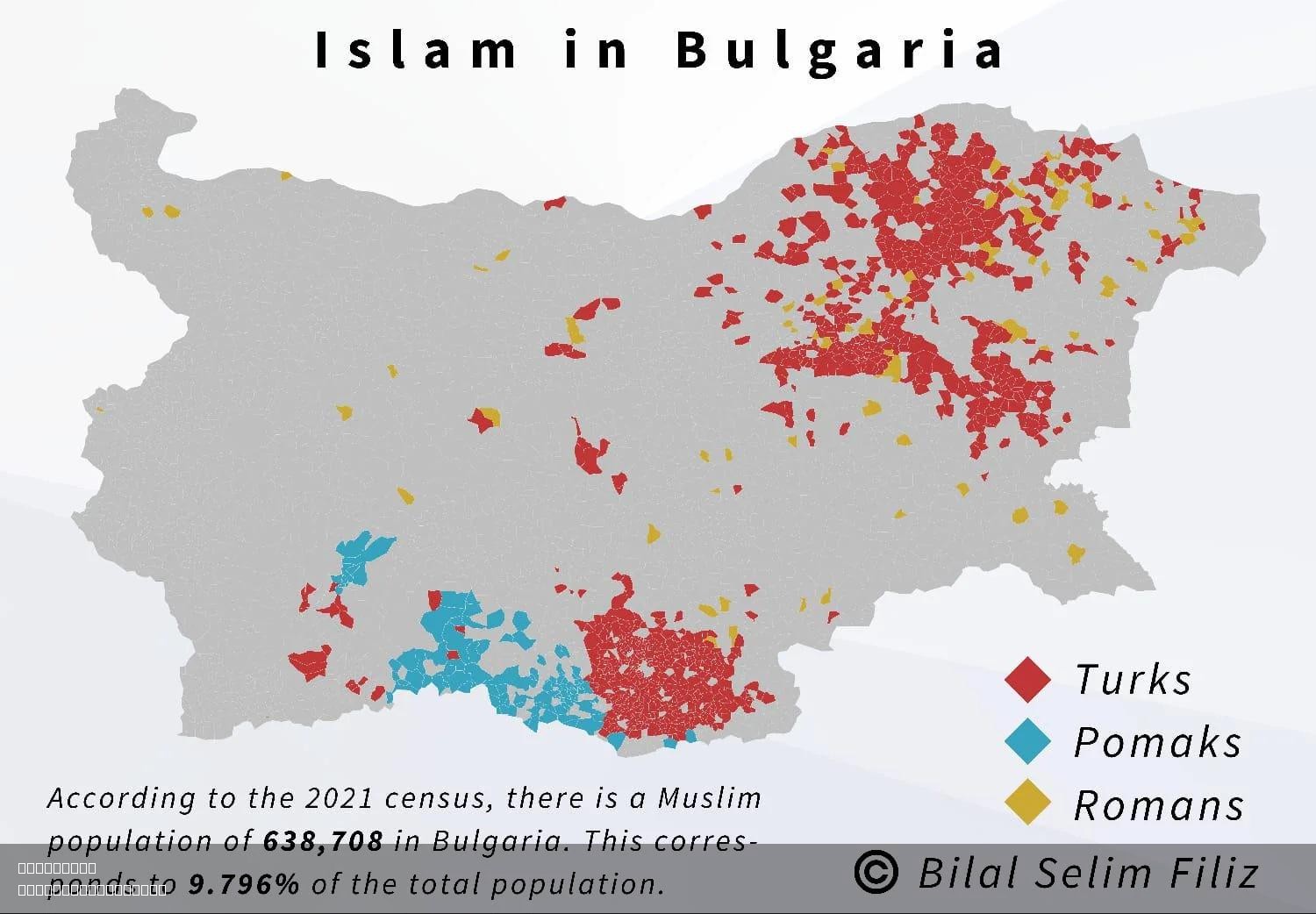Islam in Bulgaria Map


Alex Cartwright
Senior Cartographer & GIS Specialist
Alex Cartwright is a renowned cartographer and geographic information systems specialist with over 15 years of experience in spatial analysis and data...
Geographic Analysis
What This Map Shows
The "Islam in Bulgaria Map" provides a detailed visualization of the distribution and density of the Muslim population across Bulgaria. This map highlights regions where Islam has significant cultural and demographic influence, specifically focusing on the areas with notable Muslim communities. This visualization is essential for understanding the historical and social dynamics of Islam in Bulgaria, a country where diverse religious practices coexist.
Deep Dive into Islam in Bulgaria
Islam has a long-standing history in Bulgaria, dating back to the Ottoman Empire, which ruled the region for nearly five centuries. Today, Muslims make up approximately 15% of the country's population, primarily consisting of ethnic Turks, Pomaks (Bulgarian Muslims), and Roma communities. What's fascinating is that, despite its minority status, Islam has played a crucial role in shaping Bulgaria's cultural and social landscape.
The majority of Bulgaria's Muslim population resides in the northeastern and southeastern regions, particularly in areas such as Kardzhali, Razgrad, and Targovishte. For instance, the city of Kardzhali is known for its rich Islamic heritage, featuring mosques and cultural sites that reflect its historical significance. The Pomaks, largely found in the Rhodope Mountains, have maintained their unique cultural identity, often blending Bulgarian and Islamic traditions.
Interestingly, the map shows that the density of Muslims in urban areas tends to be higher compared to rural areas. Cities like Plovdiv and Sofia, which are more cosmopolitan, have significant Muslim populations. In contrast, some rural areas with fewer economic opportunities may have a reduced presence of Muslims, reflecting broader migration patterns and socio-economic trends.
The relationship between Islam and Bulgarian culture is complex. While there have been periods of tension, especially during the periods of national revival and post-communism, there is also a significant level of coexistence. Many Bulgarians celebrate Islamic holidays alongside their own, showcasing a blend of traditions that enrich the country's cultural fabric.
Regional Analysis
Breaking down the map regionally reveals distinct patterns of Muslim presence in Bulgaria. In the Rhodope Mountains, the Pomaks have a unique identity that reflects both Bulgarian and Turkish influences. This area is characterized by its mountainous terrain and historical sites that speak to the intertwined narratives of Islam and Christianity. Moreover, the map indicates that the southern regions have more mosques per capita compared to the northern regions, indicating a deeper historical root of Islam in these areas.
The northeastern regions, home to a larger ethnic Turkish population, show higher concentrations of Muslims, particularly in cities like Razgrad and Shumen. Here, the cultural influence of Islam is evident in local architecture, cuisine, and festivals, which often highlight the region's rich Ottoman heritage. Notably, the mosque in Razgrad, with its striking minaret and vibrant community, serves as a cultural hub for the local Muslim population.
In contrast, the western regions of Bulgaria, which include Sofia, demonstrate a more mixed demographic, with a higher proportion of Christians. However, urbanization has led to an increasing visibility of Muslim communities in these areas. In Sofia, for example, the presence of a mosque in the city center symbolizes a growing acceptance and integration of diverse religious practices within the urban landscape.
Significance and Impact
Understanding the distribution of Islam in Bulgaria is essential for several reasons. Firstly, it sheds light on the historical narratives that have shaped the country and its people. The coexistence of different religious groups is a testament to Bulgaria's rich cultural heritage, which has evolved through centuries of interaction among diverse communities.
Moreover, the current trends indicate a gradual shift towards greater acceptance of multiculturalism in Bulgaria. With an increasing number of immigrants and a more globalized society, the dialogue between different religious and cultural groups is becoming more prominent. This evolving dynamic has implications for social cohesion, policy-making, and community relations.
As we look to the future, the map serves as a reminder of the importance of understanding and respecting the diverse identities that contribute to Bulgaria's social fabric. Monitoring these changes will be crucial for policymakers, community leaders, and citizens alike, as they navigate the complexities of a multicultural society.
In conclusion, the "Islam in Bulgaria Map" not only illustrates demographics but also encapsulates the rich tapestry of history, culture, and community that defines the Muslim presence in Bulgaria today.
Visualization Details
- Published
- August 2, 2025
- Views
- 158
Comments
Loading comments...